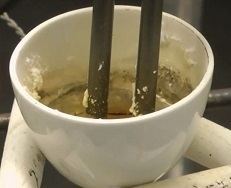Formula PbBr2 Melting point 373 °C Density 6.66 g/cm³ | Molar mass 367.01 g/mol Boiling point 916 °C Appearance white powder | |
 | ||
Dse07 13 electrolysis of molten lead ii bromide
Lead(II) bromide is the inorganic compound with the formula PbBr2. It is a white powder. It is produced in the burning of typical leaded gasolines.
Contents
- Dse07 13 electrolysis of molten lead ii bromide
- Electrolysis of molten sodium chloride nacl and lead ii bromide pbbr2
- Preparation and properties
- Safety
- References
Electrolysis of molten sodium chloride nacl and lead ii bromide pbbr2
Preparation and properties
It is typically prepared from treating solutions of lead salts (e.g., (lead(II) nitrate) with bromide salts. This process exploits its low solubility in water - only 0.455 g dissolves in 100 g of water at 0 °C. It is about ten times more soluble in boiling water.
Lead bromide was prevalent in the environment as the result of the use of leaded gasoline. Tetraethyl lead was once widely used to improve the combustion properties of gasoline. To prevent the resulting lead oxides from fouling the engine, gasoline was treated with an organobromine compound that converted lead oxides into the more volatile lead bromide, which was then exhausted from the engine into the environment.
Safety
Like other compounds containing lead, lead dibromide is categorized as probably carcinogenic to humans (Category 2A), by the International Agency for Research on Cancer (IARC). Its release into the environment as a product of leaded gasoline was highly controversial.
